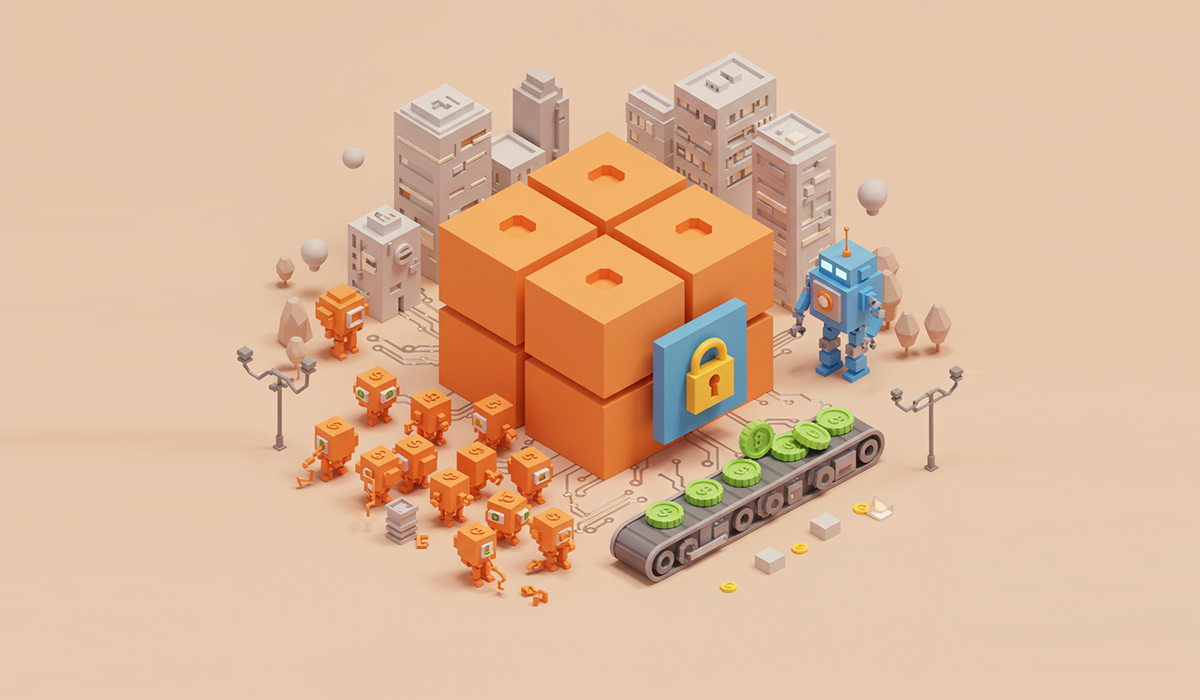Course Lessons
- Blockchain Made Easy
- Proof of Work vs Proof of Stake
- The Blockchain Trilemma
- Getting Started – Wallets and Exchanges

You are probably familiar with the iron triangle of service: "good, fast, cheap – pick two"? Well, blockchain has its own version of this cruel reality check. It's called the blockchain trilemma, and it's basically the universe's way of saying, "Nice try, but you can't have everything."
Imagine you're building your dream house, but you can only pick two out of three things: make it super secure, make it big enough to house tons of people, or make sure no single person controls it. This is the blockchain trilemma in a nutshell, and it has been driving developers crazy for years.
What's a Trilemma Anyway?
A trilemma is like being stuck between three really good options, but only being able to choose two. It's that frustrating moment when life forces you to make trade-offs. After all, you can’t eat your cake and have it.
So, let’s assume you are trying to hire someone to design your company logo:
- Fast and Cheap means that you’ll get something that looks like it was made in 5 minutes on MS Paint; a low-quality logo.
- Fast and Good will get you a superb logo, but it will come at a steep price.
- Cheap and High Quality probably means you will be getting your logo after six months.
The Three Pillars of Blockchain Architecture
1. Decentralization: Power to the People
Decentralization is one of the core tenets of blockchain technology. In a truly decentralized network, no single entity controls the system. Instead, thousands of independent nodes participate in network operations, from transaction validation to governance decisions.
Many public blockchains are decentralized, meaning there is no single point of failure and no corrupt dictator can shut them down. To put things in perspective, Bitcoin had over 20,000 nodes from all over the world as of June 2025. Similarly, Ethereum had over 14,000 nodes.
Decentralization comes with inherent challenges. Achieving consensus among thousands of independent actors takes time and computational resources. Every decision requires coordination across the network, which can slow transaction processing and increase operational complexity. This is one of the primary reasons why decentralized autonomous organizations (DAOs) fail.
2. Security: Network Integrity
Security encompasses the network's ability to resist attacks, prevent fraud, and maintain data integrity. A secure blockchain ensures that transactions cannot be altered once confirmed, network participants cannot spend funds they don't possess (double spend), the historical record remains tamper-proof, and malicious actors cannot compromise the system.
Security typically correlates with decentralization, as distributed networks are harder to attack than centralized ones. However, maintaining high security standards requires significant computational resources and careful protocol design, which can impact network performance.
3. Scalability: Mass Adoption
Scalability refers to a network's capacity to handle increasing transaction volumes without degrading performance. Traditional payment systems like Visa process thousands of transactions per second, setting a benchmark for blockchain networks seeking mainstream adoption.
I remember having to wait for more than a day for a Bitcoin transaction to be confirmed during the bull run of 2017. This is typical with many legacy blockchain projects; transaction fees and confirmation time increase when the network is congested.
Blockchain Trade-offs
According to the trilemma rule, blockchains can only excel at two out of these three things.
- Decentralization + Security = Less Scalability: Bitcoin is a prime example. It is highly decentralized with thousands of nodes globally, and incredibly secure due to its Proof of Work mechanism. But it processes a relatively low number of transactions per second, around seven. For comparison, Visa can process over 60,000 transactions per second. This is like having the world's most secure bank with only one teller window.
- Scalability + Security = Less Decentralization: Some newer blockchains or Layer-1 solutions prioritize high transaction throughput and security. They might achieve this by having fewer, more powerful validating nodes, which makes them faster but less decentralized. Ripple’s XRP falls under this category.
- Speed + Decentralization = Less Secure: This is perhaps the least desirable option on the list because it is a risky choice. It's like having a really fast car with faulty brakes.
Innovative Solutions and Approaches
From Layer 2 networks to protocol upgrades, there have been several attempts to solve the blockchain trilemma. Some networks attempt to balance all three elements through innovative consensus mechanisms and network architectures, though these often involve subtle trade-offs that may not be immediately apparent.
Ethereum decided to reinvent itself. Its approach was to switch from the energy-hungry "Proof of Work" to a more efficient "Proof of Stake" consensus. The network was also split into 64 parallel chains, with the aim of going from 15 transactions per second to potentially 100,000.
On the Bitcoin side of things, the Lightning Network handles small, frequent transactions off the main blockchain and settles them in batches later. This is more like building a fast lane on top of the existing highway. While this solution offers near-instant transactions for things like buying coffee, it only works for certain types of transactions, and some argue it's less secure than the main Bitcoin network.
Final Take
The blockchain trilemma isn't solved yet, but we're making progress. It's like the early days of the internet when loading a single image took 5 minutes – frustrating at the time, but look where we ended up.
We're probably heading toward a world with multiple interconnected blockchains, each optimized for different purposes. Like having different types of vehicles, you wouldn't drive a tank to pick up groceries, but you also wouldn't take a sports car off-roading.
The blockchain world is still figuring itself out, and that's actually pretty exciting. We're living through the invention of something that might be as important as the internet itself.